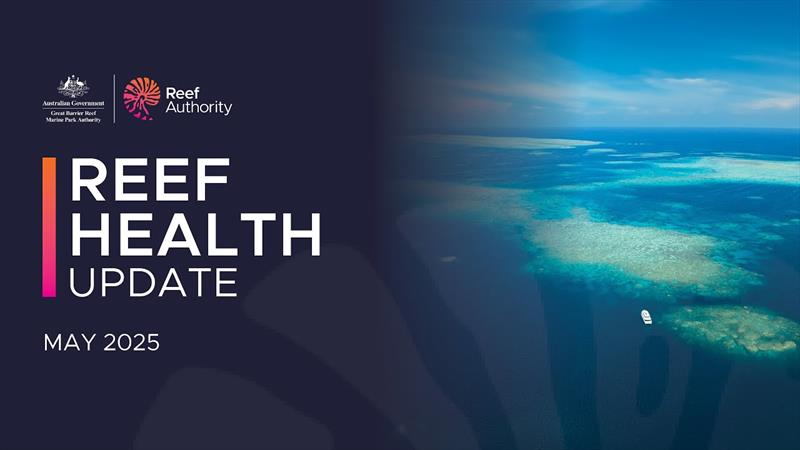
Great Barrier Reef Health update - May 2025
by Great Barrier Reef Marine Park Authority 23 May 04:41 UTC

Reef health update | May 2025 © Great Barrier Reef Marine Park Authority
As the lead managers of the Great Barrier Reef, the Reef Authority keeps an eye on the Reef year-round — with efforts stepped up over summer, a typically high-risk period from extreme weather.
The Reef Authority releases updates on the health of Reef which includes; sea surface temperatures, rainfall and floods, cyclones, crown-of-thorns starfish outbreaks, and coral disease.
These updates are based on forecasts, water temperature heat mapping, in-water surveys, citizen science and aerial surveys.
Reef Health update | May 2025
With winter on its way, pressures on the Great Barrier Reef are easing. While ocean temperatures are continuing to fall across Marine Park regions, they are still above the long-term average, but not at levels expected to cause thermal stress to corals and other marine life.
May also marks the start of the dry season in northern Australian, when very low rainfall is expected for the area — relieving Marine Park catchments of the floodwater impacts experienced during the recent summer.
Crown-of-thorns starfish outbreaks are still impacting reefs throughout the Marine Park, particularly in the south.
Temperature
Since last month's Reef health update, sea surface temperatures have decreased to 0.8 degreesC above long-term averages for the Marine Park regions. They are forecast to drop to around 0.6 degreesC above the long-term averages in June.
Since the end of April, water temperatures have dropped from 28.2 degreesC to 27.5 degreesC in the Far North region, from 27.7 degreesC to 26.9 degreesC in the North, from 27.3 degreesC to 26.6 degreesC in the Central region, and from 26.8 degreesC to 26 degreesC in the South.
Reef health
From 29 April to 13 May, 204 Reef Health and Impact Surveys were conducted across the Marine Park with coral bleaching reported on four of the 14 reefs surveyed (28 per cent).
Most reports were of no coral bleaching in the northern region, aside from isolated low level (1-10% prevalence) to medium level (11-30% prevalence) bleaching.
In the central and southern regions, surveys recorded either no or low-level coral bleaching (1-10% prevalence). No data were available for the Far Northern region during the survey period.
Crown-of-thorns starfish outbreaks continue to impact corals throughout the Marine Park, with the most severe outbreaks occurring in the southern region (Swain Reefs) and between Port Douglas and Lizard Island.
Reef management
Surveys and/or culling of the coral-eating crown-of-thorns starfish (COTS) has been undertaken on 210 reefs this financial year to date (to 14 May).
This work, conducted by the COTS Control and the Reef Joint Field Management Programs, has kept these starfish at sustainable levels for coral growth and recovery on 120 of the 210, about 57 per cent of the actioned reefs.
Culling is currently under way at 47 of these reefs (22 per cent) to suppress outbreaks of the crown-of-thorns starfish and protect coral from predation. These starfish have also been detected on the remaining 43 (21 per cent) of reefs and culling will start as soon as resources are available.
The Reef Authority continues to collaborate with Queensland Parks and Wildlife Service as key data collectors in the Reef Joint Field Management Program, as well as academic and management institutions, tourism operators, and contractors to ensure access to the latest data across the World Heritage Area.
Our management actions are geared towards building and supporting Reef resilience, including enforcing compliance with the Reef's zoning plan and ensuring people are enjoying the Reef in a responsible way.
The Reef Authority will continue providing monthly Reef health updates until summer when our weekly updates will resume.
For a summary of conditions on the Reef during the past summer, visit the 2024–25 Reef Snapshot which we develop and release each year in collaboration with Australian Institute of Marine Science and CSIRO.
If out on the Reef, you too can help protect this precious natural wonder by adopting Reef-friendly practices. Find out how here - Responsible Reef Practices.